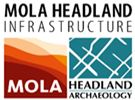Title Page
-
Conducted on
-
Name of Site
-
Principal Contractor
-
Prepared by
-
Location
-
Actions from previous inspections addressed
Management
-
Site Manager/Foreman/Supervisor present onsite
-
H&S Policy onsite
-
Environmental Policy onsite
-
Site inductions being conducted and recorded
-
Risk Assessments on site and evidence of communication
-
Method Statements available and communicated
-
COSHH Assessments & Safety Data Sheets available
-
Tool box talks conducted & Signed by attendees
-
Permits to work in place and in use
Information
-
F10 displayed onsite and current
-
Statutory notices displayed (H&S Law Poster, First Aid)
-
Emergency procedures on site and displayed
-
Site rules displayed
Environmental
-
Spill kits available
-
Chemicals and fuels bunded
-
Sufficient dust and noise controls
-
Sufficient waste control measures
General
-
Safe Access and Egress
-
Parking facilities available
-
Temp electrical supply installed and certificate by IEE Engineer
-
Emergency signage displayed
-
Suitable fire evacuation plan
-
Fire extinguishers available and serviced
-
Fire points clearly signposted and accessible
-
Rescue plans prepared and communicated
-
Flammable gasses and liquids securely stored
-
HAVS controls implemented
-
PAT testing undertaken
Operative Welfare
-
Qualified First Aiders available onsite
-
First Aid provision available and supplies in date
-
Accident book on site
-
Task specific PPE worn
-
Mandatory PPE issued (Staff & Contractors)
-
Rest and toilet facilities suitable for the site conditions
Work At Height (TUBE & FITTING STRUCTURES SCAFFOLDS)
-
-
Erected by competent persons (CISRS)
-
Guardrails, handrails and toe boards fitted
-
Appropriate signs displayed
-
Safe access to working lifts
-
Scaffold Inspections recorded
Work At Height (MOBILE TOWER SCAFFOLDS)
-
-
Erected or supervised by trained users (PASMA)
-
Used correctly by operatives
-
Manufacturers information on site
-
No Obvious erection defects (H frames, bracing)
-
Outriggers fitted (When necessary)
-
Inspections recorded
Work At Height (LADDERS, STEPS, HOP UPS, PODIUMS)
-
-
Ladders/Steps in good condition
-
Adequately secured at top/base
-
Podium steps erected correctly
-
Guardrails correctly used
-
Hop up in working order
-
Deployed on firm level footings
-
Inspections completed
Work At Height (MEWPS, Power Tower, Peco)
-
-
Thorough Examination Certificate in date
-
Harnesses in use & in date
-
Inspections completed
-
Emergency rescue plan produced
-
Manufacturers instructions available
-
Operated in a safe manner
-
Operatives certified CPCS/IPAF/NPORS
Lifting Operations (TELEHANDLER)
-
-
Equipment stored safely when not in use
-
Thorough examination certs (Person lifting 6 Month)
-
Thorough examination certs (Accessories 6 Month)
-
Thorough examination certs (Equipment 12 Month)
-
Lifting register on site and up to date
-
Lifting equipment clearly marked
-
Cranes appear to be set on stable ground
-
Prepared lifting plan
-
Appointed persons allocated to the work
-
Trained Slinger/Signaller
-
Craneage documentation in place
Confined Spaces
-
-
Permits to enter issued
-
Safe System of work in place incl Rescue Arrangements
-
Competent entry team training records
Manual Handling
-
Manual Handling training completed
-
Using employer supplied mechanical handling aids
HOUSEKEEPING
-
Work areas
-
Storage areas
-
Drying room
-
Welfare areas
OTHER
-
Any other information?
Sign Off Page
All actions highlighted on this report today have been raised by the Auditor with the site supervisor/manager at the time of Audit.
-
Name of Auditor
-
Name of Site Manager / Supervisor













